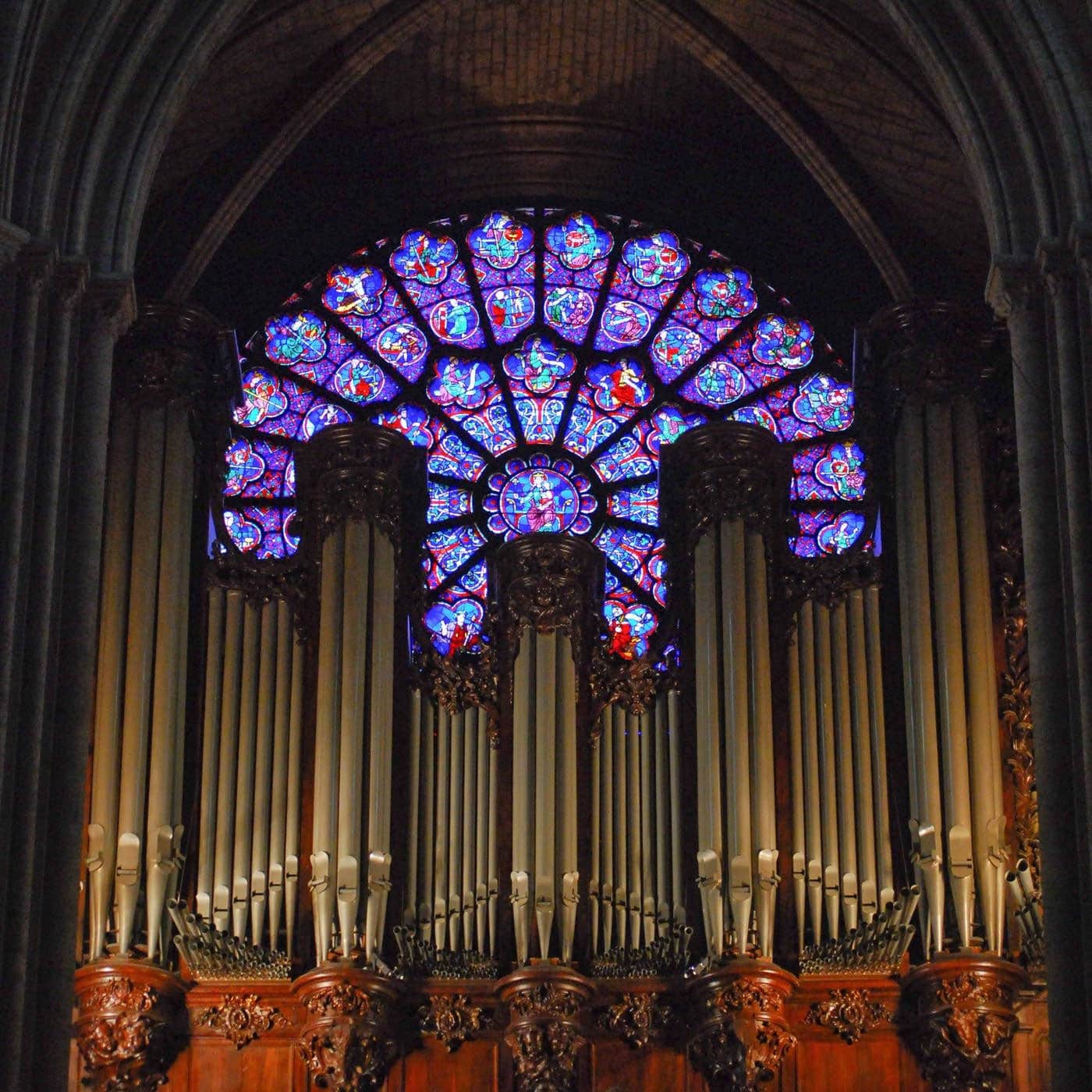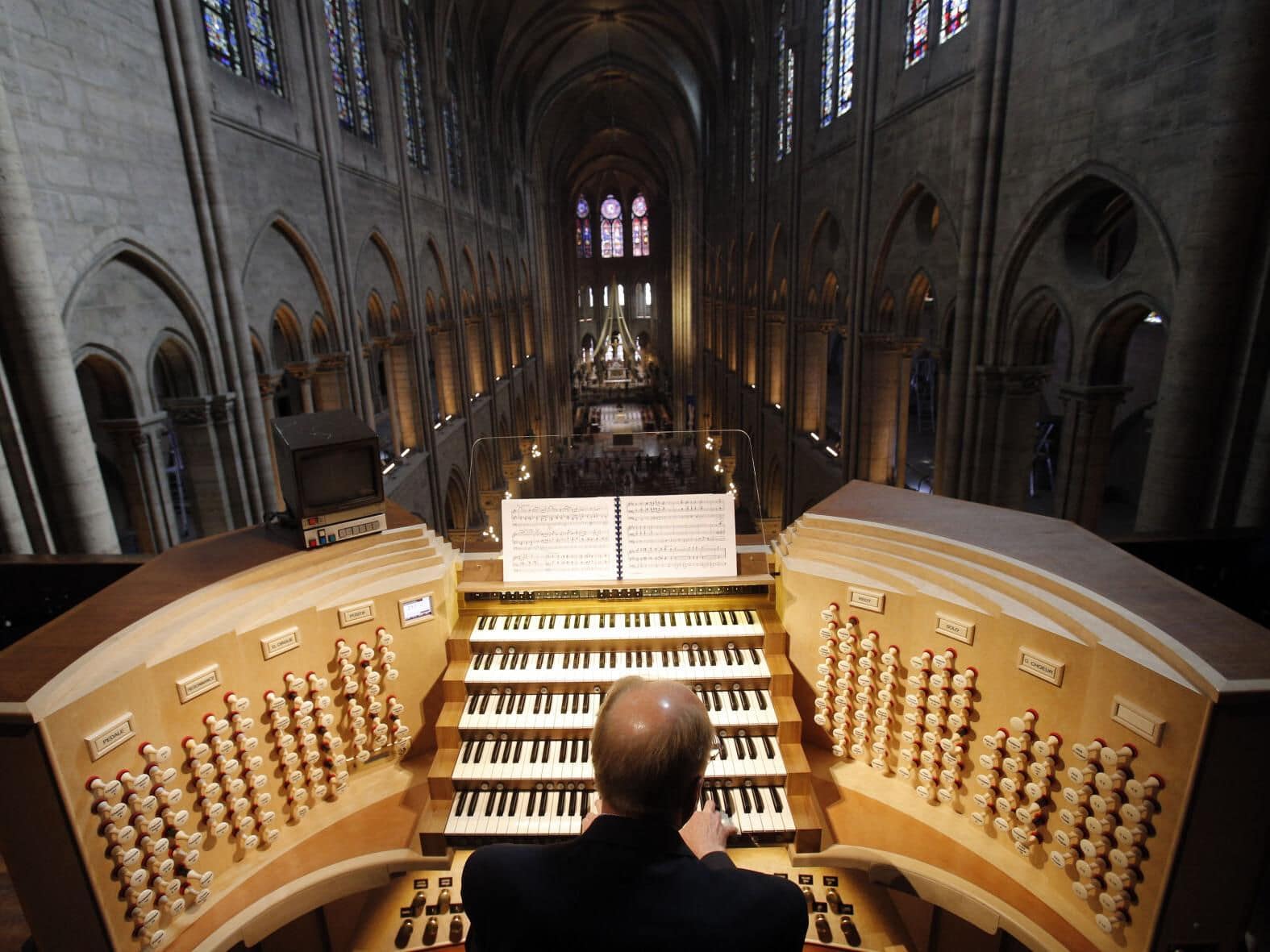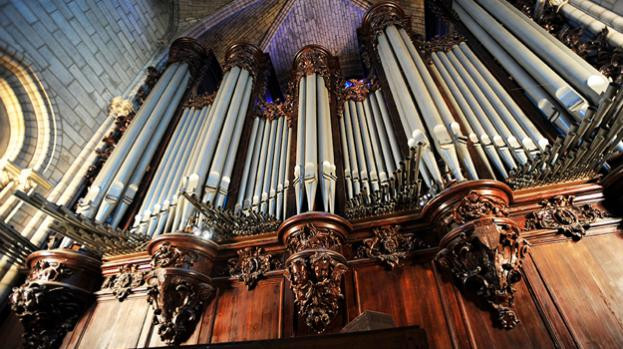History of the Notre Dame Organ
The history of organs in Notre-Dame de Paris began around 1330. The first organ was located in a loft beneath a high window in the nave. By 1400, it was decided to install a second organ on a high and narrow stone gallery above the western portal. This new organ was completed in 1403 and underwent a major fifty-year restoration in 1473. Over the next few centuries, the organ underwent several transformations, resulting in about 2,000 pipes, 4 keyboards of 50 notes, and a pedal keyboard.
Then, in 1730, it was decided to order a new organ, as France was entering the Age of Enlightenment and medieval woodworking was slowly going out of style. The contract was awarded to French organ builder François Thierry. The organ was completely redesigned to include new keyboards, an enlarged pedal division, and a new buffet and casing for the organ. The new large main organ case, in the Louis XV style, was installed higher and partially hid the west rose window. This latest iteration is what became known as the Grand Organ.
Since its installation, the Grand Organ has been the voice of Notre-Dame de Paris, and it continued to evolve in its expression. The Grand Organ received a significant makeover in the 19th century led by the French organ builder Aristide Cavaillé-Col, a master of his craft recognized both in France and around the world. Alongside the architect behind Notre-Dame Cathedral’s renovation, Viollet-le-Duc, Cavaillé-Col modernized and expanded the Grand Organ significantly. Work began in 1863 and finished in December 1867. The resulting organ was played to celebrate the Christmas season. At the time it consisted of 86 stops, 5 keyboards of 56 notes, and a 30-note pedal keyboard.
Since then, the Grand Organ continued to grow, with the help of Louis Vierne, head organist of Notre-Dame Cathedral in the early 20th century, and Pierre Cochereau, who modernized the instrument in the 1960s and 70s. Finally, the Grand Organ was entirely restored in 1992 and then underwent the most recent 21st century renovations from September 2011 to December 2012, and again from 2013 to 2014. The air compressor was updated, the several thousand pipes were cleaned, the organ’s computer system was updated, 21 new stops were added (each stop corresponds to a collection of pipes of the same timbre), along with a new console. At the end of all the work, the Grand Organ consisted of approximately 8,000 pipes, five keyboards and pedals, and 109 stops. It is one of the most expansive instruments in France.

5 Facts about Notre-Dame Organ:
- The pipe organ is the largest in France and is Notre-Dame Cathedral’s most important objects.
- It has five keyboards and approximately 8,000 pipes.
- Prior to the fire, every Sunday afternoon, the organ could be played by any and all who wish to do so, however the waiting list was almost two to three years long.
- Today, Notre-Dame has two main organists: Olivier Latry and Vincent Dubois.
- During the French Revolution, many organs in France were vandalized by revolutionaries who took the pipes and melted them down to make bullets. Notre-Dame Cathedral’s Grand Organ survived with only some of its decorative elements removed. Supposedly, the organist at the time frequently played “La Marseillaise”, placating the revolutionaries.
Interested in helping restore the Grand Organ? Click here to support the cause!
New Life for Notre Dame Organ
Today is a historic day for Notre Dame Organ: it is the first day of its journey to restoration. During the fire in April 2019, miraculously, the Grand Organ was largely unharmed by the blaze itself and received very little water damage. However, the real threat to Notre Dame Organ was the lead dust that resulted from the melting of the roof. The lead dust settled on the organ and spread throughout the instrument. Some portions were weakened further by the temperature fluctuations caused by the 2019 heatwave in France that summer.

Restoration work on Notre Dame Organ will begin with the removal of it’s expansive keyboard console and then proceed on with the dismantling of all 8,000 pipes. This process will last until the end of the year. All of the disassembled items will be stored in waterproof containers inside the cathedral. Each piece will wait its turn to be cleaned and restored until the instrument can finally be reassembled.

Notre-Dame Cathedral hopes to restore Notre Dame Organ to the state is was in before the fire. After the restoration work is complete, it will still take about six months to tune and harmonize the Grand Organ before it can be played again. The goal for Notre Dame Organ’s restoration is to have the work and tuning finished in time for April of 2024.